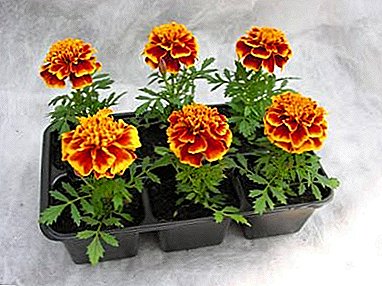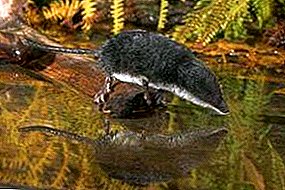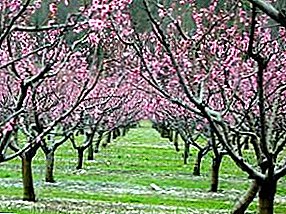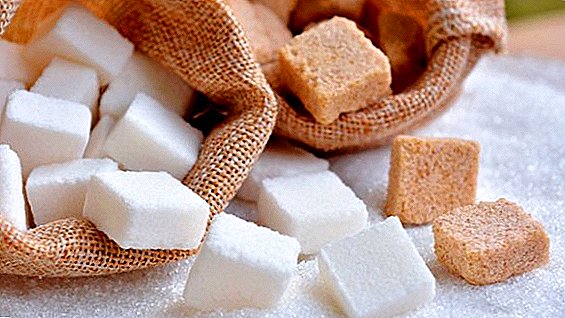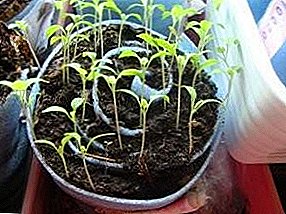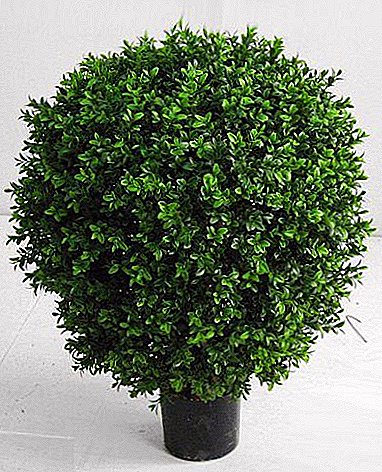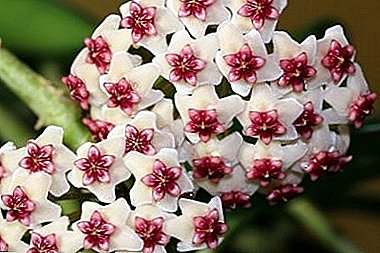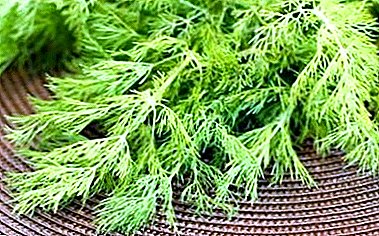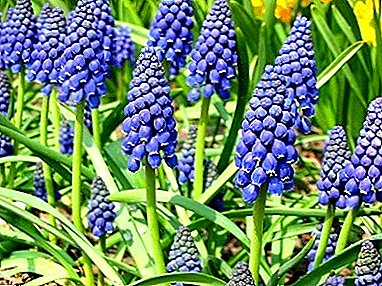
Mouse Hyacinth - flowering miniature plant. Loves bright lighting and sunshine.
Hyacinth responds well to fertilizing, fertilizer and gentle care. Propagated by daughter bulbs and seeds.
Beautiful plant Muscari
 Mouse Hyacinth - herbaceous perennial. Other names of the plant: Muscari, Snake and Serpent Bow, Grape Plant.
Mouse Hyacinth - herbaceous perennial. Other names of the plant: Muscari, Snake and Serpent Bow, Grape Plant.
Scientific names: Eubotrys and Botryanthus. Latin name: Muscari from the word "musk". After a series of successful works, this name was given to the plant by the botanist F. Miller.
This representative of the flora belongs to the flowering department, Monocotyledones class, family Hyacinthaceae and Asparagaceae.
The homeland of the mouse hyacinth is considered to be South Africa and Asia. Over 65% of all subspecies grows in the Mediterranean areas.
To date, the plant is selected in Australia and the USA. The main growth occurs in sunny forest glades. The plant loves overgrown shrubs and trees, slopes with high grass. Hyacinth can be found in the mountains of the Russian Federation and the steppe zone in open areas.
general description
Mouse Hyacinth is early spring ephemeroid. Therefore, almost all his life the plant is in a sleeping state. The branches of the flower are elongated, shaped like an onion. The diameter of the flowers is 1.0-2.5 cm. The height of the branch reaches 5-7 cm. In spring, the plant throws out peduncles and small leaves.
The total height of the flower varies from 9 to 35 cm, depending on the subspecies. Leaflets narrow, elongated, lanceolate. Assembled in a dense outlet near the root system. Streaks are flat, weakly expressed, parallel. Leaf blades in the form of grooves. As the leaves grow, they begin to bend strongly.
Learn from the video how to plant a mouse hyacinth. in open ground and how to care for the plant:
Care
Mandatory pruning this representative of the flora does not require. But if the flower grows in decorative beds, then from time to time remove yellow leaves and drooping flowers.
Landing
 Most of the subspecies are unpretentious plants. Mouse Hyacinth has excellent rooting and seed growth. When planting, please note that flower loves sunny areas.
Most of the subspecies are unpretentious plants. Mouse Hyacinth has excellent rooting and seed growth. When planting, please note that flower loves sunny areas.
Planting is made in small groups of 15-25 pieces. If the planting material was purchased, the bulbs are pre-moistened with a growth stimulation solution. For this suitable purchase solution "Fitosporin".
The distance between the bushes should be not less than 5-8 cm Planting depth - up to 7 cm. It is also necessary to consider the size of the bulbs. The larger the bulb, the more space must be left to the future plant. A small layer of 1.5 cm of black soil should be above the bulb. Do not bury the planting too deep. Otherwise, the planting will not rise and will rot in the soil.
On 1 square. meter is recommended to land 100-200 colors. If planting is done on a decorative lawn, then it is necessary to remove sod with a depth of 6-7 cm from the area. After that, the earth is well loosened and complex feedings are added in the form of compost. Next, planting material is planted. After a successful procedure, the cut out lawn is returned to its original place. Do not press the ground too much.
Important!
During the growing season, perennial recommended to feed once in 20-25 days. To do this, the complex purchase suitable fertilizer for window plants. In the fall or winter, the plant does not need top dressing.
Conditions for hyacinth
Optimal temperature for growth - above 18 ° C. This representative of the flora loves warm, sunny weather. It can withstand frosts down to minus 15 ° С.
Mouse Hyacinth prefers bright lighting. Perfectly tolerates exposure to sunlight. It can grow in the shade, but in this case, the flowering will be scarce. When growing at home in the winter can do without additional lighting.
Breeding
 The plant propagates by seed. Method of distribution of planting material - Mirmecochoria - with the help of ants. The seeds of this plant have eliosomes - fatty appendages.
The plant propagates by seed. Method of distribution of planting material - Mirmecochoria - with the help of ants. The seeds of this plant have eliosomes - fatty appendages.
It is thanks to these enzymes that the plant attracts ants. Insects pick up flower seeds and bring them to their nest.
Insects eat only Eliosome - the top of planting material. And the seeds themselves are thrown out of the anthill. In warm weather, seeds begin to grow in the new territory. Also the plant multiplies vegetative way - daughter bulbs. They are kept in a solution of growth stimulant and planted in the ground.
Bloom
This plant blooms in the middle of spring, depending on the region of growth.
Flowers of this representative flora looks like small bells. They are in dense inflorescences. The length of the tassels reach no more than 9 cm. Therefore, this plant is compared with lilies of the valley. Perianots, depending on the subspecies, have a snow-white, amber, pale pink or purple hue.
See photos like hyacinths bloom beautifully and what colors are their inflorescences:



Top flowers are sterile. Their fragrance attracts insects that pollinate the plant. Therefore, Mouse Hyacinth refers to entomophilic pollination. Perianth simple form, actinomorphic. It has 6 accrete barrel-shaped petals. On the flower is 6 stamens with purple or blue anthers. Pestle single. Ovary is at the top. It has 3 carpels. The fruit of the plant in the form of a three-chamber box.
Wintering
Shelter for the winter does not require a plant. But in order to avoid freezing, the flower can be made mulching. A covering material is poured around the root system. You can use straw, wood chips, tree bark, dry grass, sawdust. Mulch must be spread out on the surface of the earth. Before the procedure, the soil is loosened and abundantly watered. You can also mix the soil with the purchased land for strawberries, cucumbers or tomatoes.
Such protection prevents the evaporation of water from the soil, protects the root system from frost and freezing. With the right ratio of mulch, nutrients, vitamins and soil acidity are preserved. Thanks to the mulch, weed growth is slowed down or eliminated and the effective work of microorganisms is improved.
Reference!
Mulching protects Mouse Hyacinth from pests. But you can not make mulch too high, because the dry material can serve as a burrow for rodents.
Benefit and harm
 Small flowers adorn the floral composition. They give bouquets an enchanting atmosphere. They are also used in landscape design. These beautiful flowers decorate the spring flower beds.
Small flowers adorn the floral composition. They give bouquets an enchanting atmosphere. They are also used in landscape design. These beautiful flowers decorate the spring flower beds.
Due to continuous flowering during the month, the plant looks great against the background of an emerald lawn or a sunny lawn.
Flowers look great in combination with daffodils, lilies of the valley, dwarf tulips, crocuses, primroses, glades, grouse, forget-me-nots or chionodoksami.
Diseases and pests
The plant is unpretentious in growing. Therefore, there is no disease with improper care. Pests are not affected. But should avoid excessive watering when landing. Otherwise, the root system may fade.
Mouse Hyacinth is an excellent cultivated plant. Does not require special care. Recommended to amateur growers. Loves loose, breathable soil, fertilizing and systematic watering.


